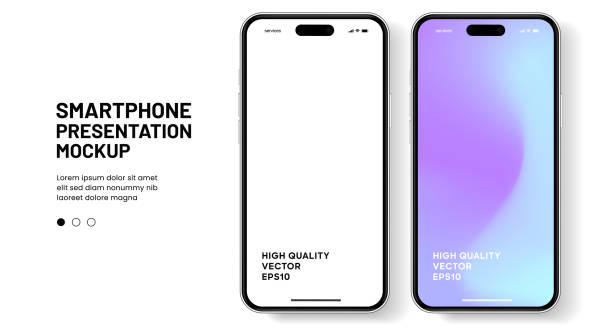The Smartwatch Revolution: Merging Fashion and Technology
In the fast-paced landscape of wearable technology, the smartwatch has emerged as a symbol of innovation, seamlessly integrating fashion and functionality. From humble beginnings as mere wrist-worn extensions of smartphones, smartwatches have evolved into sophisticated devices that go beyond telling time. This exploration delves into the journey, features, impact, challenges, and future trends of smartwatches.
Evolution of Smartwatches: A Brief Chronology
The concept of a smartwatch dates back to the early 20th century with mechanical devices that offered basic functionalities like calculating and timekeeping. However, it wasn’t until the 21st century that smartwatches, as we know them today, began to take shape.
The pivotal moment came with the introduction of the Pebble Smartwatch in 2013, which garnered attention through a successful crowdfunding campaign. Pebble demonstrated that there was a market for wearable devices that could connect to smartphones and deliver notifications on the wrist. Following Pebble’s success, major tech players, including Apple, Samsung, and Google, entered the arena, accelerating the evolution of smartwatches.
Key Features and Components
Smartwatches are characterized by a combination of hardware and software features that extend their utility far beyond traditional timekeeping. Here are some key elements:
- Display: Smartwatches feature vibrant, touch-sensitive displays that provide an interface for interacting with various apps and functionalities. AMOLED and LCD technologies offer high-resolution and energy-efficient screens.
- Operating System: Smartwatches run on specific operating systems, with watchOS (Apple), Wear OS (Google), and Tizen (Samsung) being prominent examples. These platforms serve as the foundation for the watch’s functionalities and app ecosystem.
- Connectivity: Smartwatches leverage Bluetooth technology to connect to smartphones, enabling them to receive notifications, calls, and other data directly from the paired device. Some advanced models also offer standalone cellular connectivity.
- Health and Fitness Tracking: One of the standout features of smartwatches is their ability to monitor health and fitness metrics. Built-in sensors, such as heart rate monitors, accelerometers, and GPS, track activities, sleep patterns, and even provide insights into overall well-being.
- Apps and Customization: Smartwatches support a variety of apps that extend their capabilities. Users can customize watch faces, install third-party applications, and tailor the device to suit their preferences and needs.
- Voice Commands: Many smartwatches incorporate voice recognition technology, allowing users to perform tasks, send messages, or initiate calls using voice commands. This feature enhances convenience and hands-free functionality.
- Design and Materials: Smartwatches come in a diverse range of designs, catering to different styles and preferences. Materials range from traditional stainless steel and leather to modern ceramics and lightweight alloys.
- Battery Life: The challenge of balancing feature-rich functionality with extended battery life is an ongoing consideration in smartwatch design. Advances in battery technology aim to provide longer usage between charges.
Impact on Daily Life
Smartwatches have significantly impacted how we manage our daily lives by placing essential information and functionalities at our fingertips—well, wrists. Some key areas of impact include:
- Notifications and Communication: Smartwatches allow users to receive notifications for calls, messages, emails, and app alerts directly on their wrists. This instantaneous access reduces the need to constantly check smartphones, enhancing efficiency and connectivity.
- Health and Fitness: The integration of health and fitness tracking features has turned smartwatches into valuable companions for individuals pursuing an active lifestyle. They provide real-time data, such as step count, heart rate, and sleep patterns, fostering a holistic approach to well-being.
- Navigation and Location Services: Smartwatches equipped with GPS functionality assist users in navigation, making them handy companions for outdoor activities, fitness routines, and exploring new locations.
- Productivity and Time Management: From setting reminders and alarms to managing calendars and checking the weather, smartwatches contribute to better time management and increased productivity.
- Payments and Transactions: With the incorporation of NFC technology, some smartwatches enable contactless payments. Users can make transactions conveniently by simply tapping their wrists at supported terminals.
Challenges and Considerations
Despite their transformative impact, smartwatches face certain challenges and considerations:
- Battery Life: Balancing advanced features with extended battery life remains a challenge. While some smartwatches can last several days on a single charge, others with more robust functionalities may require daily charging.
- Interoperability: The diversity of operating systems (watchOS, Wear OS, Tizen) can lead to interoperability issues, limiting cross-platform compatibility for apps and features.
- Design and Fashion: Striking a balance between technological capabilities and aesthetically pleasing design is an ongoing challenge. Users often seek devices that not only offer advanced features but also complement their personal style.
- Health Data Accuracy: The accuracy of health and fitness tracking features is critical. Users rely on these metrics for informed decision-making, and ensuring the precision of sensors is an ongoing concern.
- Privacy and Security: Smartwatches, like other connected devices, handle sensitive data. Ensuring robust security measures to protect user information and privacy is paramount.
Future Trends and Innovations
Looking forward, several trends and innovations are poised to shape the future of smartwatches:
- Advanced Health Monitoring: Future smartwatches are likely to incorporate more advanced health monitoring features, such as blood glucose monitoring, ECG capabilities, and stress tracking.
- Flexible Displays and Form Factors: Innovations in display technology may lead to smartwatches with flexible and foldable displays, allowing for novel form factors and improved comfort.
- Smartwatch Ecosystem Integration: Smartwatches will likely become more integrated into broader technology ecosystems, seamlessly connecting with other devices like smartphones, smart home devices, and even cars.
- Enhanced Battery Technology: Continued advancements in battery technology may result in smartwatches with longer battery life, reducing the need for frequent charging.
- Augmented Reality (AR) Integration: As AR technology advances, smartwatches may incorporate AR elements, providing users with immersive experiences and additional information directly on their wrists.
Conclusion
The smartwatch, once a niche gadget, has evolved into a versatile and indispensable companion. Its impact on daily life, from communication and productivity to health and fitness tracking, is undeniable. As technology continues to advance, smartwatches will likely play an even more significant role in shaping the way we interact with information, our surroundings, and our own well-being. Balancing innovation with user-centric design and addressing privacy and security concerns will be crucial as smartwatches continue to redefine the intersection of fashion and technology on our wrists.





